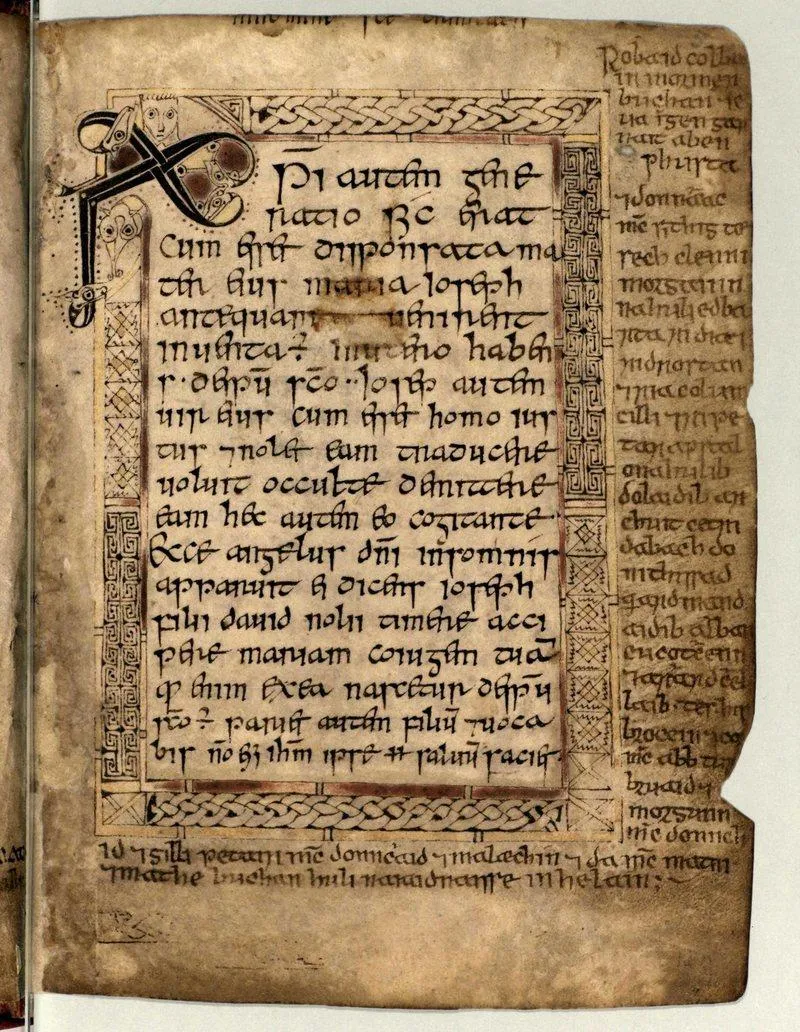Archaeologists Unearth Medieval Game Board During Search for Lost Monastery
Scotland’s oldest surviving manuscript, the Book of Deer, was written by monks living in the Aberdeenshire monastery
/https://tf-cmsv2-smithsonianmag-media.s3.amazonaws.com/filer/ff/ec/ffecbe28-71e9-403c-ad63-3ee97559ec19/michael_sharpe.jpg)
Sometime during the 10th century, monks housed at the Monastery of Deer in Aberdeenshire, Scotland, inscribed the text of four Biblical gospels, as well as an anointing of the sick and the Apostles’ Creed, onto dozens of sheets of vellum parchment. The final product, a petite prayer book penned in Vulgate Latin and Old Irish, concluded with a plaintive plea: “Be it on the conscience of anyone who reads this splendid little book that they say a prayer for the soul of the wretch who wrote it.”
Roughly 300 years later, a new generation of monks returned to the Book of Deer, scribbling notes on land grants and other aspects of daily life in the medieval text’s margins. Unlike the original gospel book, these 12th-century musings were written in Scottish Gaelic, and today, they serve as the earliest written evidence of the language, predating the closest known examples by three centuries.
Archaeologists have long strived to identify the exact location of the Monastery of Deer, which was abandoned in favor of the nearby Deer Abbey during the early 13th century. Now, BBC News reports that a medieval gaming board excavated near the Scottish town of Mintlaw, situated some 30 miles north of Aberdeenshire, may be the key to solving the centuries-old mystery.
According to The Scotsman’s Alison Campsie, monks likely used the board to play Hnefatafl, a Norse strategy game that pits a king and his defenders against two dozen taflmen, or attackers. As the king’s men attempt to herd him to safety in one of the four burgs, or refuges, located in the corners of the game board, taflmen work to thwart the escape. To end the game, the king must reach sanctuary or yield to captivity.
The board “is a very rare object,” archaeologist Ali Cameron of The Book of Deer Project, who is in charge of excavations, tells Campsie. “Only a few have been found in Scotland, mainly on monastic or at least religious sites. These gaming boards are not something everyone would have had access to.”
Researchers used carbon dating to pinpoint their find to the 7th and 8th centuries, several hundred years prior to the creation of the Book of Deer. Charcoal unearthed at the ruins of a nearby building were similarly dated to between 669 and 777 A.D.

Bruce Mann, an archaeologist with the Aberdeenshire Council, tells BBC News that the board and charcoal represent the earliest confirmed evidence of activity at the excavation site. A previous dig held in June 2017 uncovered pottery dating to the medieval period and charcoal fragments dating to between 1147 and 1260, a period when the monastery had yet to be abandoned for Deer Abbey.
“A medieval date for this hand-made pottery suggests the building underneath the layers where the pottery had been found might also be medieval in date,” Cameron told BBC News in early January.
The game board’s discovery and dating to the 7th and 8th centuries offer tantalizing indication that the dig site was, in fact, home to the medieval monastery, but as Mark Hall, a medieval games specialist at the Perth Museum and Art Gallery, cautions, “This temptation remains just that until further evidence presents itself to make a valid link between the disc and the date.”
Archaeologists began actively searching for the lost monastery in 2008, Vittoria Traverso writes for Atlas Obscura. Excavations are sponsored by the Book of Deer Project, a local initiative that works to publicize the Scottish text. According to the project website, the Book of Deer surfaced at Cambridge University in 1715. It remains at Cambridge to this day (the university has helpfully digitized the entire text), though the initiative hopes to negotiate with the school to bring the text back to Aberdeenshire for temporary exhibition.
Michelle Macleod, a Gaelic expert at the University of Aberdeen, tells The Scotsman’s Campsie that the Scottish Gaelic found in the Book of Deer deviates from the shared Scottish and Irish Gaelic seen in earlier manuscripts. These shifts, she adds, “are the first written indication that the languages are separating and would be an indication of what people were likely saying.”
Despite its petite size—the book measures about four by six inches, the same dimensions as a typical modern-day photo print—Macleod says that the Book of Deer “has left a huge legacy for us, not only in the north-east but for the whole of Scotland.”
For now, the game board is simply an enticing clue to the monastery’s exact location, but as Cameron reports to BBC News, the Book of Deer Project is already raising funds for further digs in hopes of bringing the mystery one step closer to a definitive conclusion.
/https://tf-cmsv2-smithsonianmag-media.s3.amazonaws.com/accounts/headshot/mellon.png)
/https://tf-cmsv2-smithsonianmag-media.s3.amazonaws.com/accounts/headshot/mellon.png)